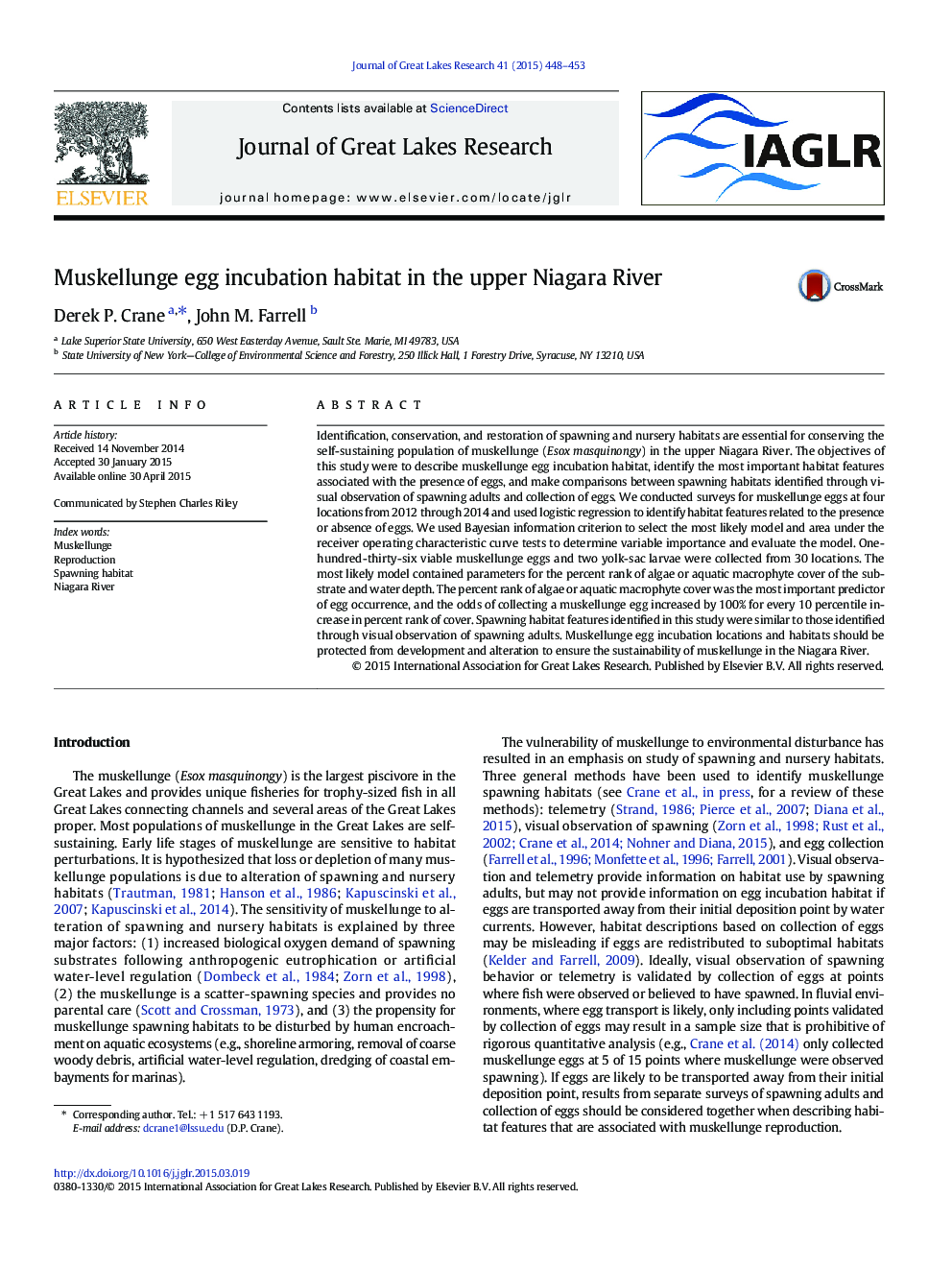| Article ID | Journal | Published Year | Pages | File Type |
|---|---|---|---|---|
| 6305009 | Journal of Great Lakes Research | 2015 | 6 Pages |
Abstract
Identification, conservation, and restoration of spawning and nursery habitats are essential for conserving the self-sustaining population of muskellunge (Esox masquinongy) in the upper Niagara River. The objectives of this study were to describe muskellunge egg incubation habitat, identify the most important habitat features associated with the presence of eggs, and make comparisons between spawning habitats identified through visual observation of spawning adults and collection of eggs. We conducted surveys for muskellunge eggs at four locations from 2012 through 2014 and used logistic regression to identify habitat features related to the presence or absence of eggs. We used Bayesian information criterion to select the most likely model and area under the receiver operating characteristic curve tests to determine variable importance and evaluate the model. One-hundred-thirty-six viable muskellunge eggs and two yolk-sac larvae were collected from 30 locations. The most likely model contained parameters for the percent rank of algae or aquatic macrophyte cover of the substrate and water depth. The percent rank of algae or aquatic macrophyte cover was the most important predictor of egg occurrence, and the odds of collecting a muskellunge egg increased by 100% for every 10 percentile increase in percent rank of cover. Spawning habitat features identified in this study were similar to those identified through visual observation of spawning adults. Muskellunge egg incubation locations and habitats should be protected from development and alteration to ensure the sustainability of muskellunge in the Niagara River.
Related Topics
Physical Sciences and Engineering
Earth and Planetary Sciences
Earth and Planetary Sciences (General)
Authors
Derek P. Crane, John M. Farrell,
